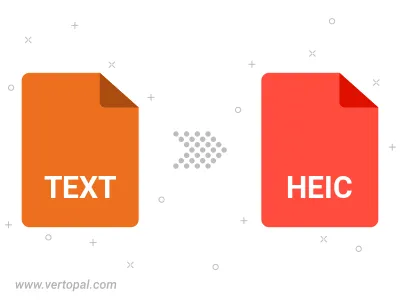Convert TEXT HADDOCK to HEIC
Convert TEXT HADDOCK markup documents to HEIC format, edit and optimize documents online and free.

The TEXT file extension, associated with Haddock Markup Language, is used for documentation in Haskell programming. Haddock is a tool for generating documentation from annotated Haskell source code. It uses a lightweight markup language, similar to LaTeX, to format the documentation. The history of Haddock dates back to its creation by Simon Marlow and others as part of the GHC (Glasgow Haskell Compiler) project. It has since become a standard tool in the Haskell community for creating comprehensive and readable documentation.
The High Efficiency Image Container (HEIC) is a file extension used to store images and image sequences, leveraging the High Efficiency Image Format (HEIF). Developed by the Moving Picture Experts Group (MPEG) and introduced in 2015, HEIC files are acclaimed for their superior compression efficiency, which allows for high-quality images at smaller file sizes. This format is widely used in modern digital devices, including smartphones and cameras, to optimize storage capacity without compromising image quality. It supports advanced features such as live photos, burst photo sequences, and transparent images, making it integral for contemporary digital imaging solutions.
Select a TEXT HADDOCK markup document from your computer, or drag & drop it on the page.
For an advanced conversion, use the TEXT HADDOCK to HEIC optional tools available on the preview page and click the Convert button.
You will be redirected to the download page to see the conversion status and download your HEIC file.

To change TEXT HADDOCK format to HEIC, upload your TEXT HADDOCK file to proceed to the preview page. Use any available tools if you want to edit and manipulate your TEXT HADDOCK file. Click on the convert button and wait for the convert to complete. Download the converted HEIC file afterward.
Follow steps below if you have installed Vertopal CLI on your macOS system.
cd to TEXT HADDOCK file location or include path to your input file.Follow steps below if you have installed Vertopal CLI on your Windows system.
cd to TEXT HADDOCK file location or include path to your input file.Follow steps below if you have installed Vertopal CLI on your Linux system.
cd to TEXT HADDOCK file location or include path to your input file.